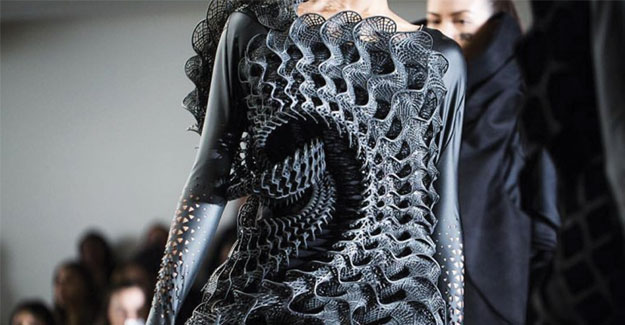
Textile Innovations Focus On Mass Customisation, Smarter Apparel, With Greener Footprint
Innovative technologies, out-of-the-box thinking, and a whole lot of R&D is transforming commodity textile fibre into a high value, high tech, high performance material. Researchers, designers, engineers are working hard to overcome the challenges presented in 3D printing a garment.
When successful, this could become the future of customisable mass production. And will lead to the development and transformation of textiles that are suited to 3D printing. Smart fabrics have come a long way since the last decade, and research and innovations continue to make smart apparel a retail choice.
Researchers and brands are working together to find innovative sustainability solutions in recycling, circular economy, waste water management, and generally to improve the green footprint.
Designers, engineers overcome challenges to 3D print garments
Designers are trying to find ways to overcome the challenges presented in 3D printing of garments, mainly because of the difficulties in printing flexible materials. For the most part, 3D printing is used for producing non-flexible parts. That's why 3D printing fashion is a very expensive process still reserved for runway shows.
Today, most 3D printed garments are typically built using mesh systems, which are individually 3D printed and later assembled. Despite all of the challenges that come with 3D printed fashion, designers alongside engineers have managed to overcome many in order to produce some of their wildest designs. And there are some promising projects, which are making 3D printed apparel a reality in retail stores.
Danit Peleg - 3D printing clothes at home
Back in 2015, Danit Peleg introduced her first ever fashion collection, Liberty Leading The People, which was also her graduation project at the Shankar College of Design.
What's so special about Peleg's 3D printed clothing is that she made it all at home, on a 3D printer that fits on most desks. Apart from that, the fact that she had no previous experience in 3D printing makes this project even more impressive. Most fashion items from the Liberty Leading The People collection were assembled from multiple 3D printed parts. Using the mesh design on the dress, the designer achieved the desired flexibility and drew quite a bit of attention on the runway.
Since the introduction of her first 3D printed clothes collection, Peleg created another impressive collection, The Birth Of Venus. Peleg's ultimate goal is to make 3D printed fashion more accessible. To achieve that, she introduced the first 3D printed garment available for purchase. It's a jacket and sells on her website for US$ 1500. The 3D printed jacket is limited to only 100 pieces due to the 3D printer's capacity and work speed, but it's a perfect example of how 3D printing could become a mass customisation solution.
[caption id="attachment_16269" align="alignleft" width="300"]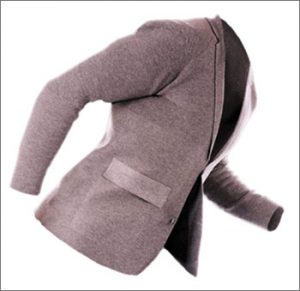 Move with ease![/caption]
threeASFOUR - 3D printed dress
The Pangolin 3D printed dress uses a nano-enhanced elastomer 3D printing material, which gives it both flexibility and durability. It was created in collaboration between three ASFOUR, Stratasys, & architect Travis Fitch. The dress was printed on 10 printers and took 500 hours to complete. After printing, all the "chain-like" parts were connected together to form the dress. The creators claim that each unit of the dress functions by itself in order to produce a 3D effect while moving.
Ministry of Supply - Jacket without seams
In 2016, Ministry of Supply introduced a 3D printed jacket, which at a price of $250, sold out incredibly fast. Because the jacket is 3D printed, there are no seams, which makes it a very comfortable garment. And despite the lack of seams, the garment still features articulated joints for the purpose of following your body's contours. The jacket was made on a 3D robotic knitting machine, a process which saves material over traditional knitting. It's thought that 15-30% of the material gets wasted with conventional methods. Thanks to 3D modeling, the jacket can be perfectly suited to each individual. Pair that with no seams, and you've got a winning combo!
3D printed fashion footwear
Big players in the footwear industry have been developing solutions for mass customisation for years. 3D printing not only enables these companies to prototype much faster, it's also a great solution for mass customisation.
Companies diving into the arena include Adidas and New Balance, who are starting to 3D print midsoles. Nike, in the meantime, is experimenting with 3D printed "uppers". The future for 3D printed footwear looks exciting. Whether athlete or fashionista, anyone could soon have perfectly-fitted shoes thanks to 3D printing.
[caption id="attachment_16270" align="alignleft" width="300"]
Move with ease![/caption]
threeASFOUR - 3D printed dress
The Pangolin 3D printed dress uses a nano-enhanced elastomer 3D printing material, which gives it both flexibility and durability. It was created in collaboration between three ASFOUR, Stratasys, & architect Travis Fitch. The dress was printed on 10 printers and took 500 hours to complete. After printing, all the "chain-like" parts were connected together to form the dress. The creators claim that each unit of the dress functions by itself in order to produce a 3D effect while moving.
Ministry of Supply - Jacket without seams
In 2016, Ministry of Supply introduced a 3D printed jacket, which at a price of $250, sold out incredibly fast. Because the jacket is 3D printed, there are no seams, which makes it a very comfortable garment. And despite the lack of seams, the garment still features articulated joints for the purpose of following your body's contours. The jacket was made on a 3D robotic knitting machine, a process which saves material over traditional knitting. It's thought that 15-30% of the material gets wasted with conventional methods. Thanks to 3D modeling, the jacket can be perfectly suited to each individual. Pair that with no seams, and you've got a winning combo!
3D printed fashion footwear
Big players in the footwear industry have been developing solutions for mass customisation for years. 3D printing not only enables these companies to prototype much faster, it's also a great solution for mass customisation.
Companies diving into the arena include Adidas and New Balance, who are starting to 3D print midsoles. Nike, in the meantime, is experimenting with 3D printed "uppers". The future for 3D printed footwear looks exciting. Whether athlete or fashionista, anyone could soon have perfectly-fitted shoes thanks to 3D printing.
[caption id="attachment_16270" align="alignleft" width="300"]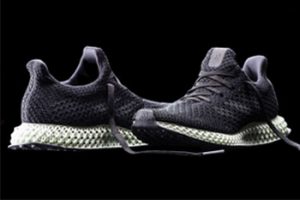 Adidas Futurecraft 4D sneakers[/caption]
Adidas - The future of midsoles
Teaming up with Carbon, a company specialising in resin 3D printing, Adidas recently developed the first mass-produced 3D printed midsole. With the goal of providing maximum running comfort, Adidas decided 3D printing was the only way of making the complex shape they were looking for in their Futurecraft 4D shoes. Using traditional manufacturing techniques, the 4D midsole would be extremely hard, if not impossible, to produce. With Carbon's 3D printing technology, Adidas can easily accomplish the desired structure, which features a complex lattice. Last year Adidas pioneered the midsole, implementing it into shoes like the Daniel Arsham x Adidas. Through additive manufacturing, Adidas is striving for mass customisation with the concept of offering customers the ability to personalise their shoes.
Ganit Goldstein - Old meets new
[caption id="attachment_16271" align="alignleft" width="300"]
Adidas Futurecraft 4D sneakers[/caption]
Adidas - The future of midsoles
Teaming up with Carbon, a company specialising in resin 3D printing, Adidas recently developed the first mass-produced 3D printed midsole. With the goal of providing maximum running comfort, Adidas decided 3D printing was the only way of making the complex shape they were looking for in their Futurecraft 4D shoes. Using traditional manufacturing techniques, the 4D midsole would be extremely hard, if not impossible, to produce. With Carbon's 3D printing technology, Adidas can easily accomplish the desired structure, which features a complex lattice. Last year Adidas pioneered the midsole, implementing it into shoes like the Daniel Arsham x Adidas. Through additive manufacturing, Adidas is striving for mass customisation with the concept of offering customers the ability to personalise their shoes.
Ganit Goldstein - Old meets new
[caption id="attachment_16271" align="alignleft" width="300"]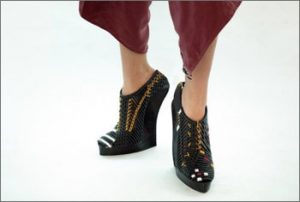 3D printing spreads from sports to fashion shoes[/caption]
With the help of Stratasys, designer Ganit Goldstein produced a 3D printed woven shoe. The piece is part of the project Between the Layers, which consists of numerous 3D printed shoes and garments.
The shoe was created using a Stratasys Connex3 3D printer, which has the ability to print multiple colours and materials. Alongside 3D printing, Goldstein made use of ikat, an eastern technique for dying woven fabrics.
3D printing spreads from sports to fashion shoes[/caption]
With the help of Stratasys, designer Ganit Goldstein produced a 3D printed woven shoe. The piece is part of the project Between the Layers, which consists of numerous 3D printed shoes and garments.
The shoe was created using a Stratasys Connex3 3D printer, which has the ability to print multiple colours and materials. Alongside 3D printing, Goldstein made use of ikat, an eastern technique for dying woven fabrics.
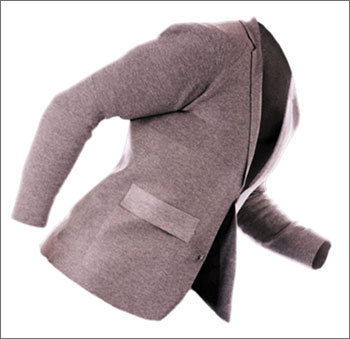
Textile Excellence
If you wish to Subscribe to Textile Excellence Print Edition, kindly fill in the below form and we shall get back to you with details.








